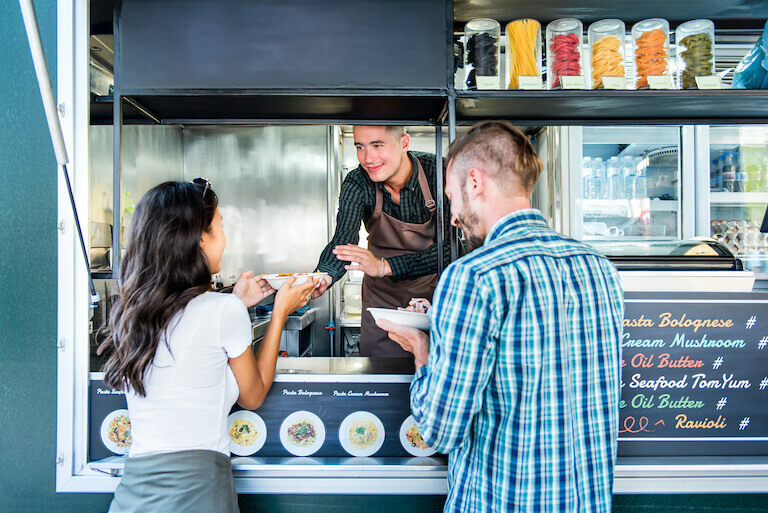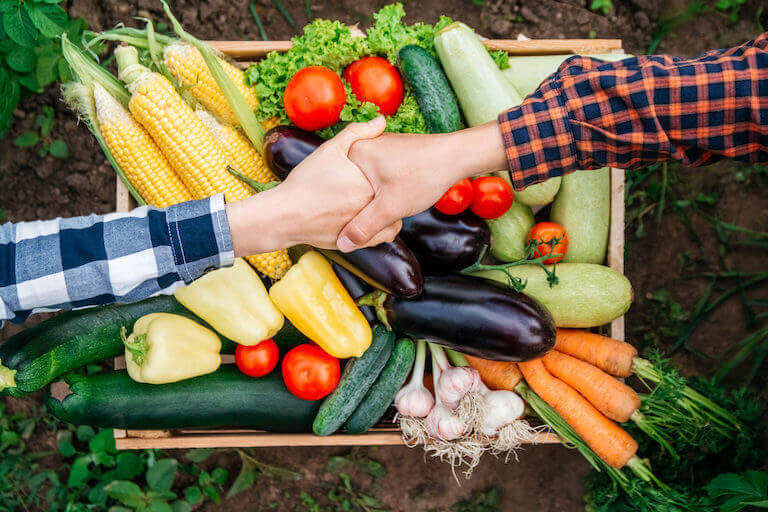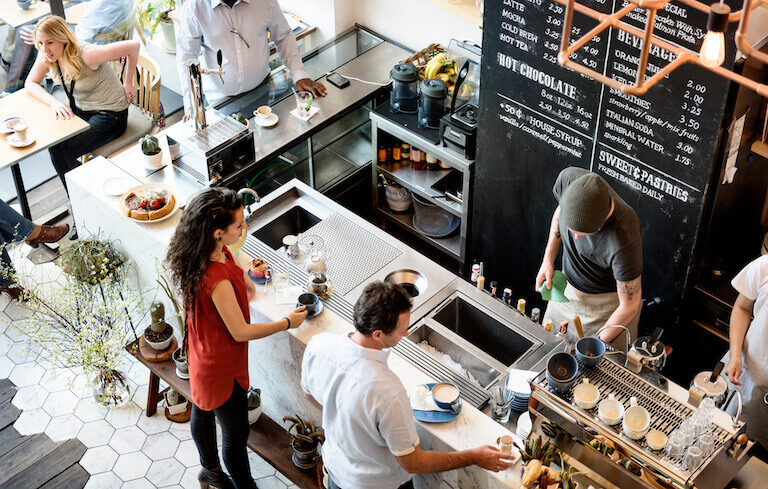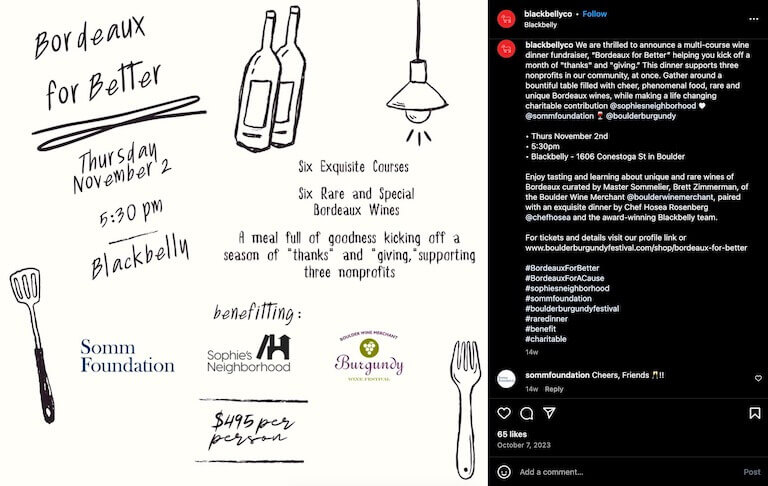What makes a restaurant successful? Is it the quality of the food? The pleasant ambiance? The reputation of the chef?
While all those things are important, what it really comes down to is the customer. Without a community of people coming in to support a restaurant week after week, there simply couldn’t be a restaurant!
As a restaurateur, then, you may want to stay on the lookout for opportunities to celebrate and cultivate your relationship with your community. Not only is this a great chance to show your appreciation and support for the people who support you, but, by demonstrating your values and principles, you can help set yourself apart from other restaurants—something Deloitte has identified as a way restaurants can differentiate themselves and build a more loyal following.
Let’s take a closer look at some things restaurants can do to get involved in their communities.
Who Is Your Community—and How Do You Fit In?
What is “the community”? Who is that?
The idea of engaging with the community sounds nice, but remember that communities are made of people—so your outreach should be designed to connect with people, too. Generic “community outreach” efforts can potentially seem inhuman and disingenuous if they’re disconnected from what the people in your community actually want or need.
Think about who you’re trying to reach. You can start by thinking about the demographics of your existing customers. What do you think they would respond to? Then branch out to your broader area. What are the demographics there? Is it a suburban environment with a lot of families? A more densely populated space with a lot of office workers?

Considering the makeup of your community can help you decide what kind of outreach you want to try.
As you start to get a clearer picture of who the community is, you may find it easier to come up with ideas for how to engage with them.
While it can be important to think about your target demographics, there’s another key factor you should definitely consider: your own values and priorities. Don’t just try to anticipate what you think people might notice—do what feels right for you. Ideally, you’ll be able to express your values in a way that will also resonate with the community.
Building Bridges and Giving Back: 5 Ways To Get Involved in Your Community
As you begin to understand who you’re trying to connect with, you can also start to zero in on the strategies you may want to use to actually go out and do that. And while your imagination is the only limit on how you might go about this, here are five ideas to get you started.
1. Give to Charitable Causes
When it comes to making a positive impact on the local community, there’s perhaps no more direct way to do this than by giving to charitable causes. This could take many forms, from organizing food drives or charity dinners to donating food to food banks and participating in community-minded events, like community cleanup days.
While restaurant owners may take the lead on this, they can also encourage their staff to get involved too—for instance, by offering a couple of paid community service days each year, where staff members can take the day off in order to volunteer to help a cause of their choice.
“Another way a restaurant can get involved,” says Ashley Godfrey, Escoffier Hospitality & Restaurant Operations Management Instructor, “is by sponsoring a ‘community night’ where the percentage of sales goes to a local club, organization, or school group. This brings in consistent patrons for the restaurant, on maybe a slow night, and can also foster goodwill with the community with a tangible impact.”

Restaurant owners and staff members have many options when it comes to giving back to the community.
For restaurateurs looking for some additional inspiration, Chef Tammie Barnhill, Chef Instructor at Escoffier’s Austin campus and founder of the 4U Crew, a club that offers students an opportunity to give back to others through outreach and baked good donations, offers a few more ideas for how restaurants can give back:
- Around the holiday season, restaurants can sponsor toy drives and invite patrons to make donations to help children in need. Consider offering a small bonus or a paid day off to the server who solicits the most donations from customers in order to incentivize participation.
- Partner with local food banks and soup kitchens to prepare fresh meals once a month, once a quarter, or even once a year—like around Thanksgiving.
- Restaurants can also partner with organizations like the Ronald McDonald House to help provide meals for sick children and their families.
- Set up a booth to serve small bites during fundraisers for groups like March of Dimes, Meals on Wheels, or Communities in Schools.
- In addition to hosting a “community night,” restaurants can also place a permanent drink or entrée special on their menu, with a portion of the proceeds donated to a local charity.
- Sponsor a dinner for local first responders. This could be an opportunity to collaborate with other restaurants in your area to express the gratitude of the entire community.
Activities like these not only provide highly tangible aid to the community, they also allow you to form bonds with people and groups that are aligned with your values, and to demonstrate that those values are at the heart of your business.
2. Create Local Partnerships
A great place to begin is to explore opportunities for creating partnerships with other local businesses. For example, you might try to focus on sourcing local ingredients. This can be a unique selling point for your restaurant, giving you the opportunity to work fresh, seasonal ingredients into your cooking, while also potentially reducing your food costs and helping to support local farmers and artisans at the same time.
You might also find ways to feature other food businesses’ products on your menu—like nearby bakeries to provide fresh bread and other baked goods, breweries to provide great local brews, and so on. You could take this a step further and allow another business to do a pop-up in your space—a unique way to potentially turn a slow night into an opportunity to increase exposure for your business and to support up-and-coming fellow entrepreneurs.

Forming partnerships with local farmers can be a great way to support other small businesses.
You could even look beyond food businesses for opportunities to create local partnerships. For example, if your restaurant runs a loyalty program, you might be able to ask other local shops and businesses to offer discounts to your loyalty members—creating the possibility of collaborative promotions and cross-marketing, which could benefit everybody involved.
3. Support Local Artists and Musicians
Another way your restaurant can build bridges is by supporting the creative community in your area. Consider inviting local artists to hang work in your space. Not only can this contribute to your restaurant’s ambiance, but, if you change the work regularly, your restaurant could build a reputation as a place where people can be exposed to interesting new artwork, which might give customers an additional reason to keep coming back.
You could also try inviting local musicians to perform in your restaurant. Do you serve brunch on weekends? Try turning it into a jazz brunch. Do you have one night that’s consistently slow? Consider making that your live music night.
Embracing the local creative community can potentially turn your restaurant into a cultural hub, not just a place where people can get a meal.

Inviting musicians to perform in your restaurant can make your space a cultural hub.
4. Embrace a Pay-What-You-Can Concept
Restaurants can also give back on the individual level by embracing a growing trend of flexible menu pricing.
Some restaurants choose to adopt a “pay it forward” approach here, where guests can purchase meals to be made available to others who might not be able to afford it. While this idea is great in principle, it can sometimes run into problems—for example, if no pre-paid meals are available, someone in need may end up going hungry. Beyond that, some individuals may be reluctant to simply accept a meal that someone else has paid for.
“A better idea,” says Chef Vicki Berger, Chef Instructor in Escoffier’s Hospitality & Restaurant Operations Management program, “may be to have a few ‘pay what you can afford’ or pay by donation meals on your menu.” In this model, guests choose how much to pay for certain menu items; some may choose to pay $20 or $30 for a dish, while others pay only a fraction of that price.

Offering pay-what-you-can options can enable anyone in the community to come to your restaurant.
“Many restaurants operate on razor thin profit margins, so giving away free meals just isn’t an option for many,” says Chef Berger. “However, by getting the community involved through ‘paying it forward’ or dining via donation, the restaurant can help serve the needy in their community while still maintaining profitability.”
5. Offer Community-Focused Events and Deals
Lastly, restaurants also have an opportunity to show that they care for their community by hosting events or offering deals and discounts that are tailored to their needs.
“One way a restaurant can get involved in the community would be to host events or meetups at their location,” says Godfrey, Escoffier Hospitality & Restaurant Operations Management Instructor. “This benefits everyone because it can draw in potential customers to your business, while also serving as the spot of engagement for community members. Some examples could be hosting trivia or karaoke nights, having a weekly or monthly run club meetup at your business, or being the host location for a local community or charity fundraising event.”
It all depends on which segments of your community you’re most interested in connecting with. Want to appeal to local business owners? Consider offering your space at a discount for businesses to hold events. Interested in pulling in sports fans? Try hosting watch parties for the big game.

Offering event space at a discount could be a good way to show support for other local businesses.
The same logic can apply to any discounts you choose to offer. If there are a lot of students in your area, you might choose to offer a student discount; the same could be true for seniors, teachers, and so on. Use what you discovered about the demographics in your area to tailor your strategy to the community’s needs.
Don’t Just Act—Engage with Your Community
If you’re doing community outreach right, then—ideally—your reputation will spread organically, by word-of-mouth. But there’s more you can do. By engaging with the community, restaurateurs can both help to get the word out and ensure that they’re sending the right message.
Use Social Media to Spread the Word
Social media can be a great opportunity to showcase your engagements with the community—whether you’re advertising a collaboration with a local artisan or sharing photos from your most recent community service day.
When you show your followers you care, you can both humanize your business and demonstrate your commitment to being a positive force in the community. The more you do this, the more it becomes a part of your brand image—which can be a compelling reason for like-minded customers to want to support you. However, be mindful that you’re not creating the impression that you’re just doing all this for the publicity—which could be a turn-off for some customers. Instead, focus on the importance of altruism, celebrating others, and being genuine.

Restaurants can use social media to spread the word about their support for the community.
For example Boulder’s Blackbelly used an Instagram post to announce a fundraiser they hosted on behalf of a number of community nonprofits. The comments focus on the event and the organizations, rather than the restaurant itself; in fact, while the post features the logos of the nonprofit organizations, it doesn’t feature the restaurant’s logo—ensuring the focus remains on the cause instead.
This is a great example of how restaurants can use social media to responsibly promote their support for the community.
Ask for Feedback on How You’re Doing
As you continue to cultivate a responsible brand image, consider opening up a conversation with your customers (and other members of the community) about how things are going. Find out what they think of the things you’re doing and the way you’re talking about it—and see if there are any changes that they might suggest.
This can help you make sure your activities are aligned with what the community wants, and that they’re getting the message that you’re trying to send. It might also help you discover new ideas for connecting with the community that could allow you to create new, even stronger bonds.
Getting Involved in the Community is a Win for Everyone
Community engagement is a great way for your restaurant to connect with people on a level that goes beyond the transaction. When you know the people in your community, and they know you, and you all know that you share values and appreciation for one another, your restaurant can go beyond just a place that serves food and become a truly unique pillar of the community—which can enable both restaurants and communities to grow together.
If you’re looking for more ways to hone your abilities as a restaurant owner, culinary school could be a great place to do that. Escoffier’s Food Entrepreneurship and Hospitality & Restaurant Operations Management programs can give students the opportunity to enhance their business skills in the context of a comprehensive culinary curriculum.
Online courses can make it easier to pursue these opportunities on your own schedule—and financial aid, grants, and scholarships are available to those who apply and qualify, which can help make these programs more attainable as well.



